The Vietnamese Lunar New Year, also known as Tết, is the most important holiday in Vietnam. It is a time for families to come together, celebrate the new year, and honor their ancestors. Tết is also a time for feasting, and many traditional foods are prepared and enjoyed during the holiday.
Introducing Vietnamese Lunar New Year
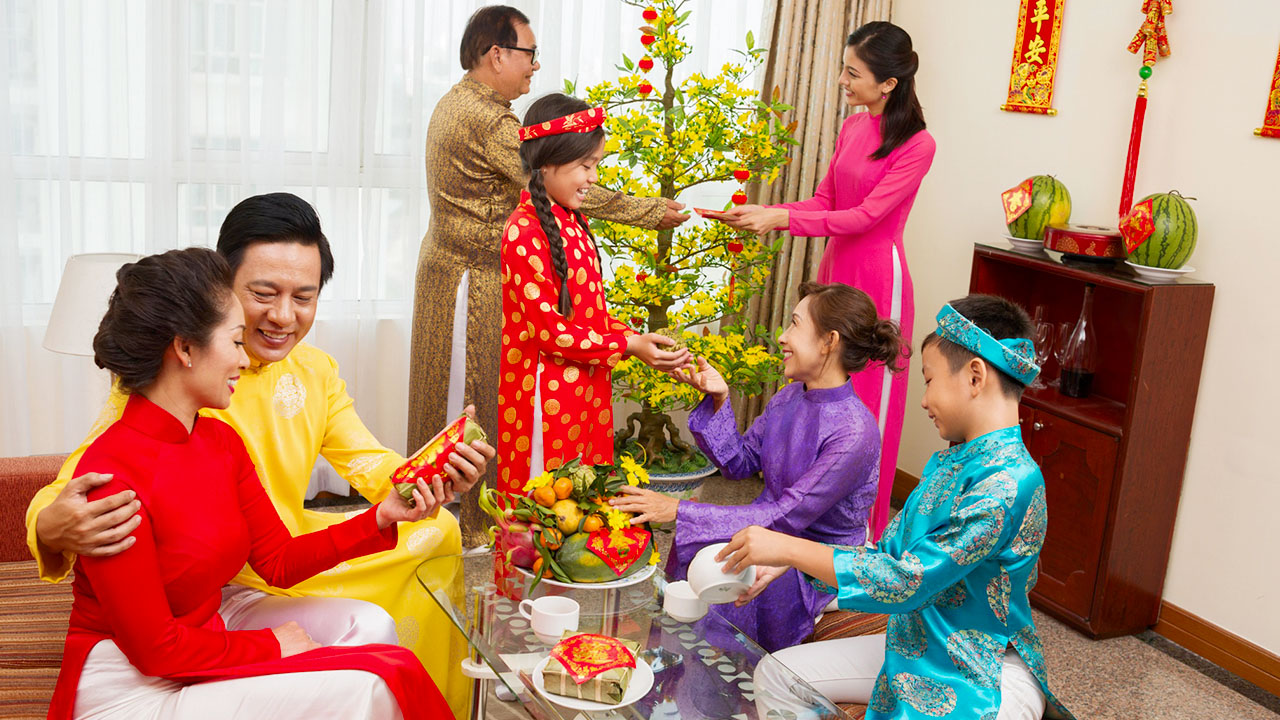
The Vietnamese New Year, widely known as Tet, stands as the most significant festival in Vietnam, a nationwide celebration marking the commencement of the new year according to the traditional lunar calendar. The dates for Tet vary annually, typically falling between mid-January and late February.
In the upcoming year, Tet will grace the calendar on February 10, 2024, heralding the Year of the Dragon. In 2025, it will arrive on January 29, ushering in the Year of the Snake, and in 2026, Tet will fall on February 17, inaugurating the Year of the Horse.
Tet festivities span for three days and can extend up to an entire week, with the festival subdivided into the days leading up to New Year’s Eve, New Year’s Eve itself, and the subsequent New Year’s Days. The ritual of honoring Ong Tao, the guardian of the family kitchen fire, on the 23rd day of the twelfth lunar month marks the inaugural event heralding the approach of Tet. This spiritual practice fosters hope for a year of abundance and good fortune.
The most crucial moment of Tet unfolds at midnight on the eve of the first day of the lunar New Year. At this precise instant, families set up two ancestral altars, one for the spirits of their ancestors and another for the heavens and the earth. This ceremonial tradition carries the significance of leaving behind the misfortunes of the past year to welcome the forthcoming years’ blessings and goodness.
Following the Vietnamese New Year’s Eve, the official Tet period commences, spanning three days, from the first to the third day of the first lunar month. This period symbolizes a fresh start and a prosperous new year. According to customs, this is a time for families to reunite, visit relatives, celebrate the longevity of the elderly, offer lucky money to children, and exchange well wishes for a safe and prosperous year.
In Vietnam, there is a saying: “Mong 1 tet cha,” meaning the first day is reserved for visiting paternal relatives; “Mong 2 tet me,” indicating the second day is dedicated to maternal relatives; and “Mong 3 tet thay,” signifying the third day is for paying respects to teachers, showcasing the deep-rooted tradition of respecting educators in Vietnamese culture.

The Lunar Tet holiday in Vietnam is the grandest festival among traditional celebrations. However, the exact origin and history of Tet remain subjects of various interpretations. The prevailing belief affirms the purely Vietnamese heritage of the Tet celebration. According to the legend of Banh chung banh day, the Vietnamese people have been celebrating Tet since the time of the Hung Kings, even before the northern occupation. Many ancient Chinese texts mention the Vietnamese Tet holiday as an occasion when people gathered to dance, sing, and revel in feasting.
The Tet holiday holds immense significance for the Vietnamese people, embodying spiritual values and deep emotional connections, and has become an integral part of Vietnamese culture. It symbolizes the profound connection between heaven, earth, humanity, and the divine, and serves as a time for cherished family reunions. Tet is a solemn and sacred occasion, marking the farewell to the old year and the welcoming of the new one with heartfelt wishes for good health, abundance, and harmony.
The Lunar New Year in Vietnam also emphasizes the moral principle of remembering one’s roots and appreciating cultural heritage. It is an opportune time for reconciliation, fostering harmony, and resolving conflicts among individuals in their daily lives.
Traditional Foods for Vietnamese Lunar New Year
Bánh chưng (Chung cake)
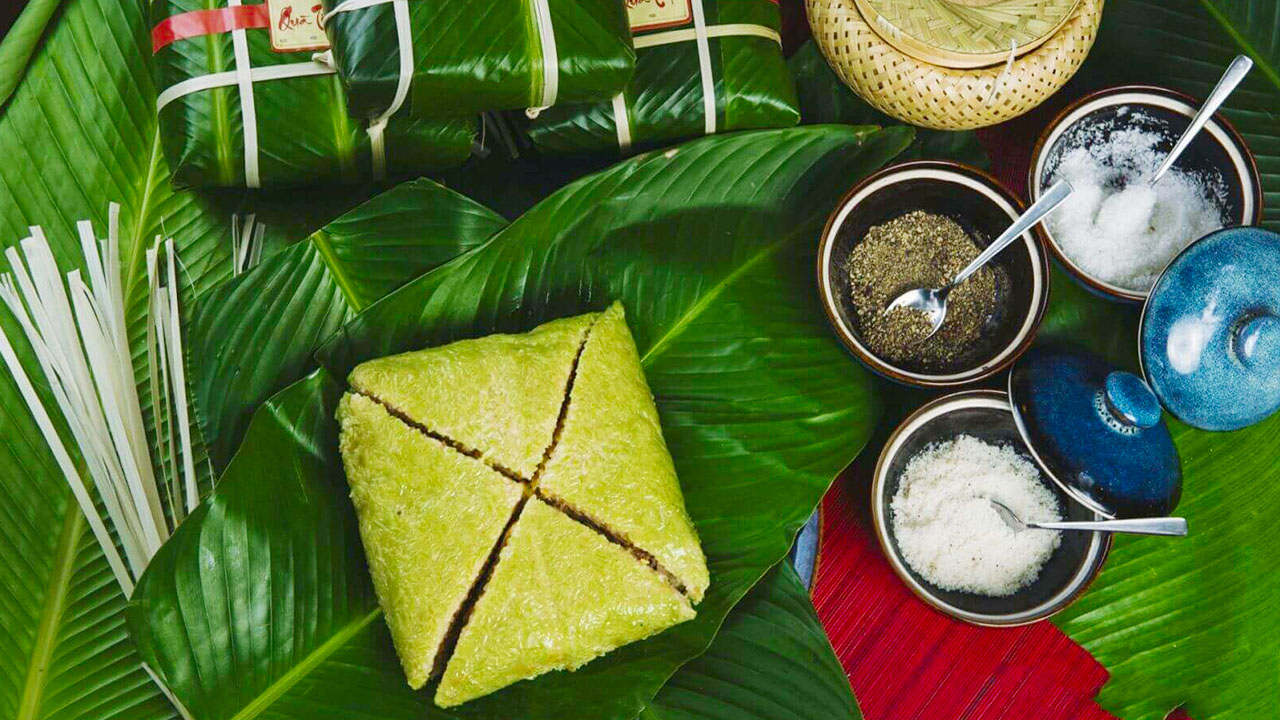
Bánh chưng is a traditional Vietnamese New Year cake made from glutinous rice, mung beans, and pork. The cake is wrapped in “dong” leaves and boiled for many hours. Bánh chưng is a symbol of prosperity and good luck, and it is often served at the family altar during Tết.
Bánh chưng is an integral part of Tet for Vietnamese people. The cake is wrapped in “dong” leaves in a square shape. Inside each bánh chưng is a filling of fatty pork meat and mung beans. The green color of the “dong” leaves, and the square shape signifies the earth, and the mung beans and pork signify plants cultivated on earth and animals bred on earth, demonstrating the importance of agriculture in Vietnamese culture.
Making bánh chưng is a time-consuming, labor-intensive process that usually involves the whole family. Traditionally, family members gather a few days before Tet to assemble the cakes. Bánh chưng cooked for 8-12 hours, requiring constant monitoring and care. This long cooking time allows the rice to become fully translucent and develop its sticky, chewy texture. When done, the bánh chưng is unwrapped from the “dong” leaves and served in wedges. Eating homemade bánh chưng is one of the most enjoyable traditions of Tet for Vietnamese families.
Gà luộc (Boiled chicken)
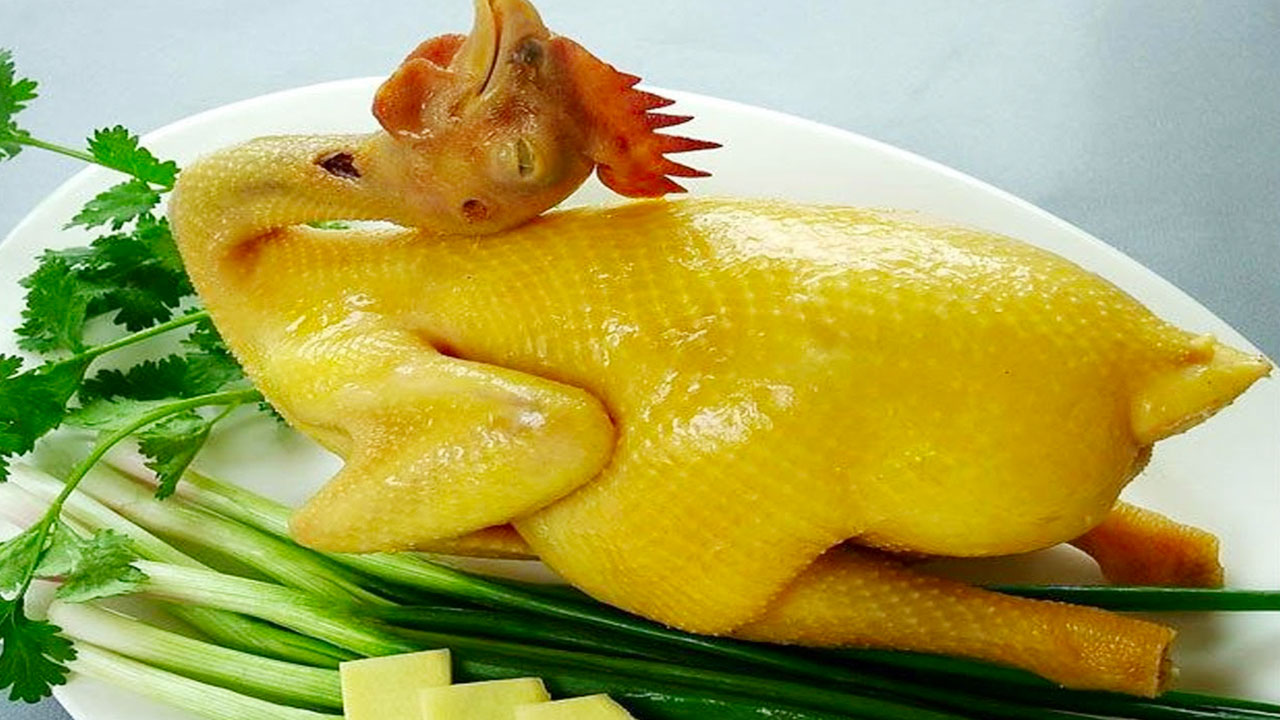
Gà luộc, boiled whole chicken, is another quintessential dish for Tet. The entire chicken is cleaned, rubbed with salt and pepper, and placed into a pot to boil until cooked through.
The whole boiled chicken symbolizes family unity and togetherness. It is always presented whole, never cut up, to honor family ties. The salt used to season the chicken also represents the hardships and difficulties the family has overcome in the previous year. Serving this dish wishes for prosperity and happiness in the new year.
When cooked properly, the chicken flesh becomes silky and succulent beneath the skin. Gà luộc is often served with nuoc mam cham, a bright and salty dipping sauce made of fish sauce, garlic, chilies, sugar, and lime. Family and friends gather around the table, peel pieces of chicken from the bones, and dip the meat into the nuoc mam cham. The flavors are simple but satisfying.
Giò (Vietnamese sausage)
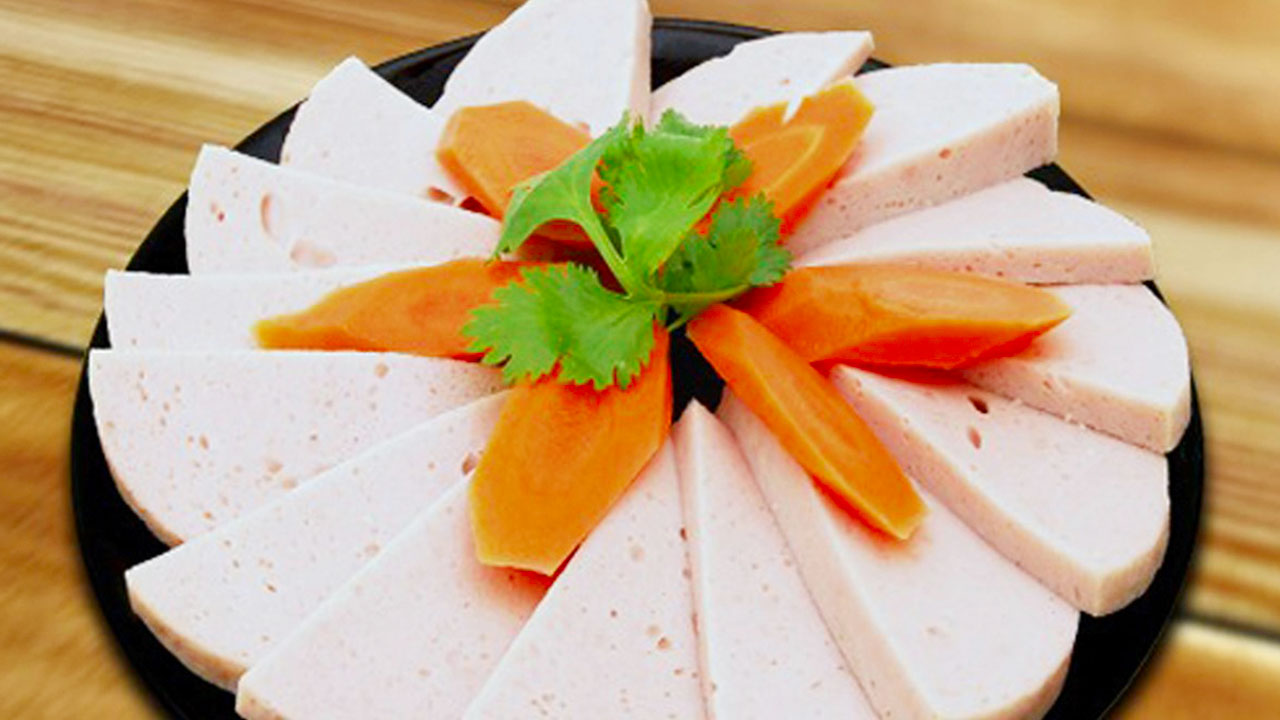
Giò is a type of Vietnamese sausage made from ground pork, fish sauce, and spices. The sausage is wrapped in banana leaves and steamed. Giò is a popular dish during Tết, and it is often served with bánh chưng and boiled chicken.
Making giò is a tradition passed down through generations in Vietnam. The fresh sausage links symbolize the sweetness of life and are essential for Tet feasts and offerings. Many regions have their own recipe for giò , but the primary ingredients are fatty pork, fish sauce, black pepper, garlic, and minced onion.
After mixing the ground pork filling, the sausage is packed tightly into banana leaf tubes, wrapped into links, and secured with bamboo string. The giò is then placed into a steamer and cooked for 1-2 hours until the pork is fully cooked and the casing is translucent.
When sliced, the thin pork slices have an irresistible ricg red color from the natural reactions between the nitrites in the fish sauce and myoglobin in the pork. The flavor is sweet, salty, and deeply savory. Giò is often fried up into crispy discs and dipped in cham dipping sauce along with the other Tet dishes.
Xôi gấc (Gac sticky rice)
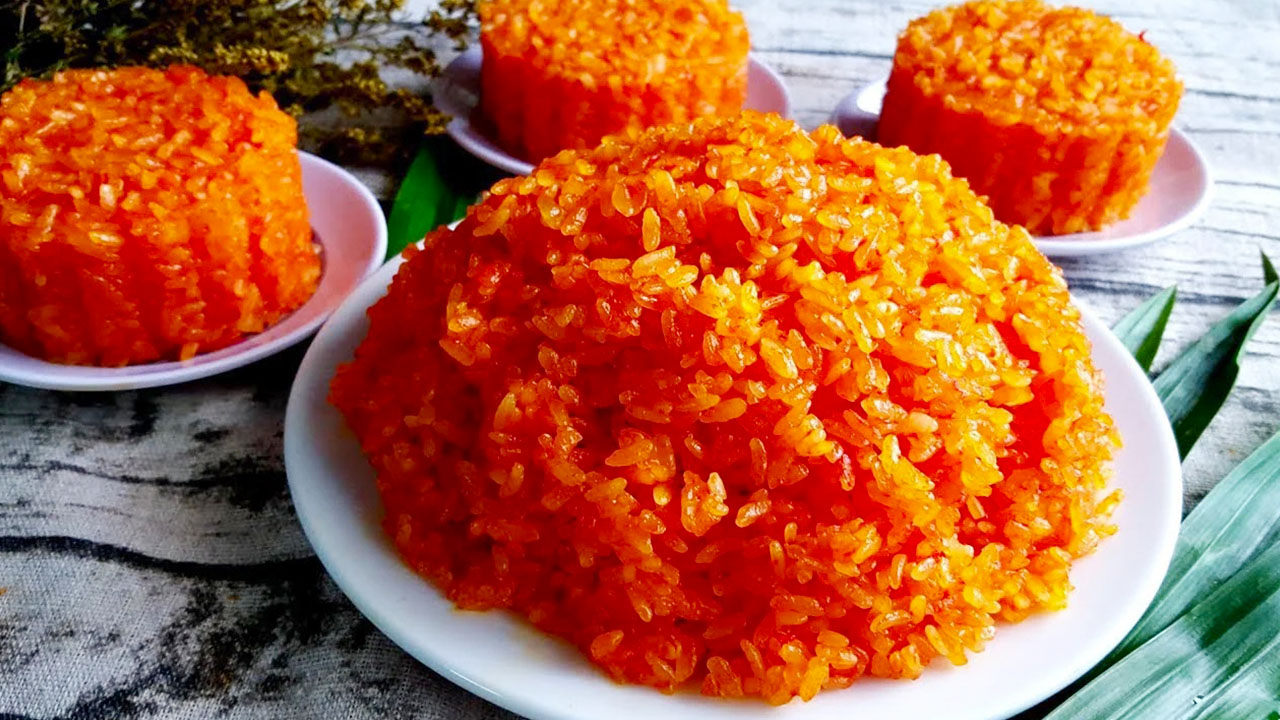
Xôi gấc is a sticky rice dish made with gac fruit. Gac fruit is a type of gourd that is native to Vietnam. The fruit is bright red in color, and it has a sweet and slightly tart flavor. Xôi gấc is a symbol of good luck and prosperity, and it is often served at family gatherings during Tết.
The gac fruit grows on spiny vines and is about the size of a cantaloupe. Only the flesh surrounding the seeds is used. The deep red-orange pulp is simmered with glutinous rice, turning the grains an eye-catching shade of crimson. When cooked, the rice takes on a soft and chewy texture infused with the mild sweetness of the gac fruit.
In the past, gac was a rare, expensive fruit, so xôi gấc was reserved for Tet and special events. Nowadays, it is more common but still highly symbolic of a sweet, prosperous new year. The crimson grains represent luck and are often part of the ancestral altar offerings. Xôi gấc is also served along with other dishes like giò lụa, boiled chicken, and candied fruits.
Nem rán (Deep fried spring rolls)
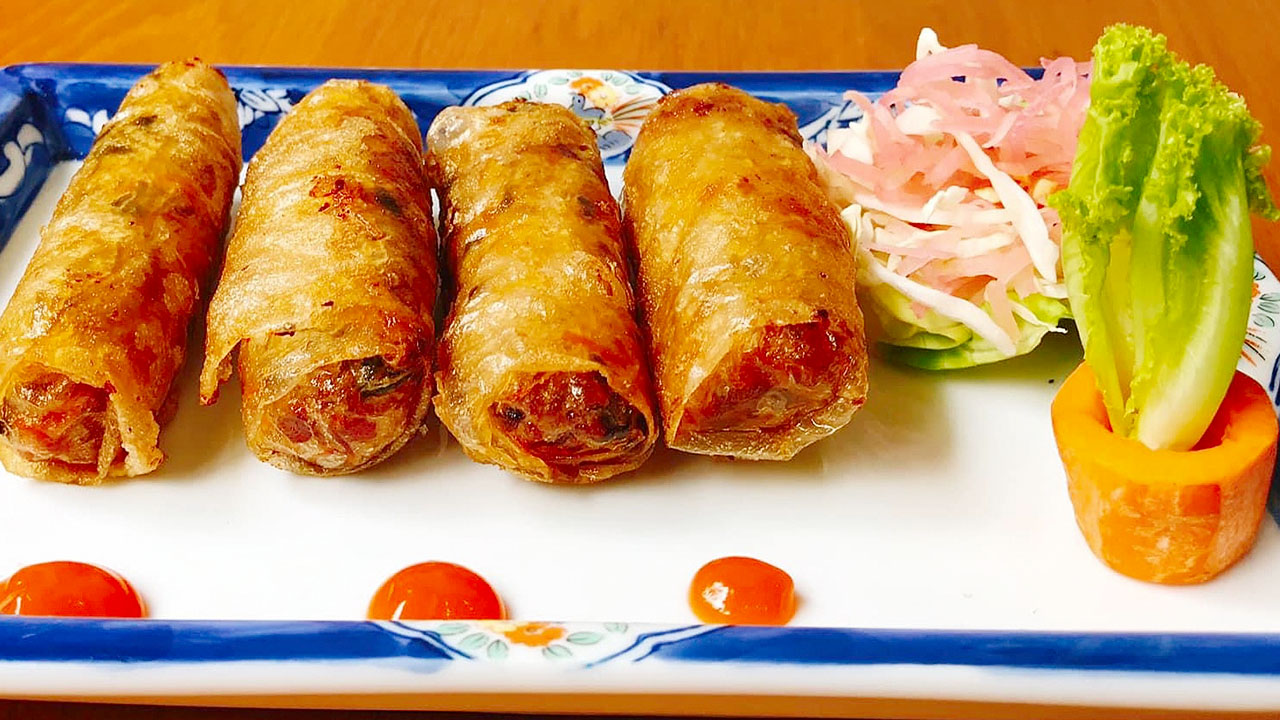
Nem rán are a popular Vietnamese dish that is often served during Tết. The spring rolls are made with ground pork, shrimp, vegetables, and rice noodles. They are wrapped in rice paper and deep-fried until golden brown. Nem rán is a symbol of wealth and prosperity, and it is often served with a dipping sauce made from fish sauce, lime juice, and chili peppers.
These crispy fried rolls are a heavenly combination of textures and flavors. Inside the delicate rice paper wrapper is a mix of seasoned pork, shrimp, julienned carrots, wood ear mushrooms, and thin vermicelli noodles. The rolls are quickly fried in hot oil until the wrappers are shatteringly crisp while the filling remains moist and tender.
Nem rán are served up piping hot, typically with a tangy-salty nuoc cham dipping sauce. Crunchy and fresh herbs like lettuce, perilla, and mint are provided. Family and friends gather around a platter of nem rán, wrapping them in herbs, dipping in sauce, and enjoying each other’s company. The nem rán embody the prosperity, health, and happiness wished for in the new year.
Canh bóng (Vegetables soup with pig skin)
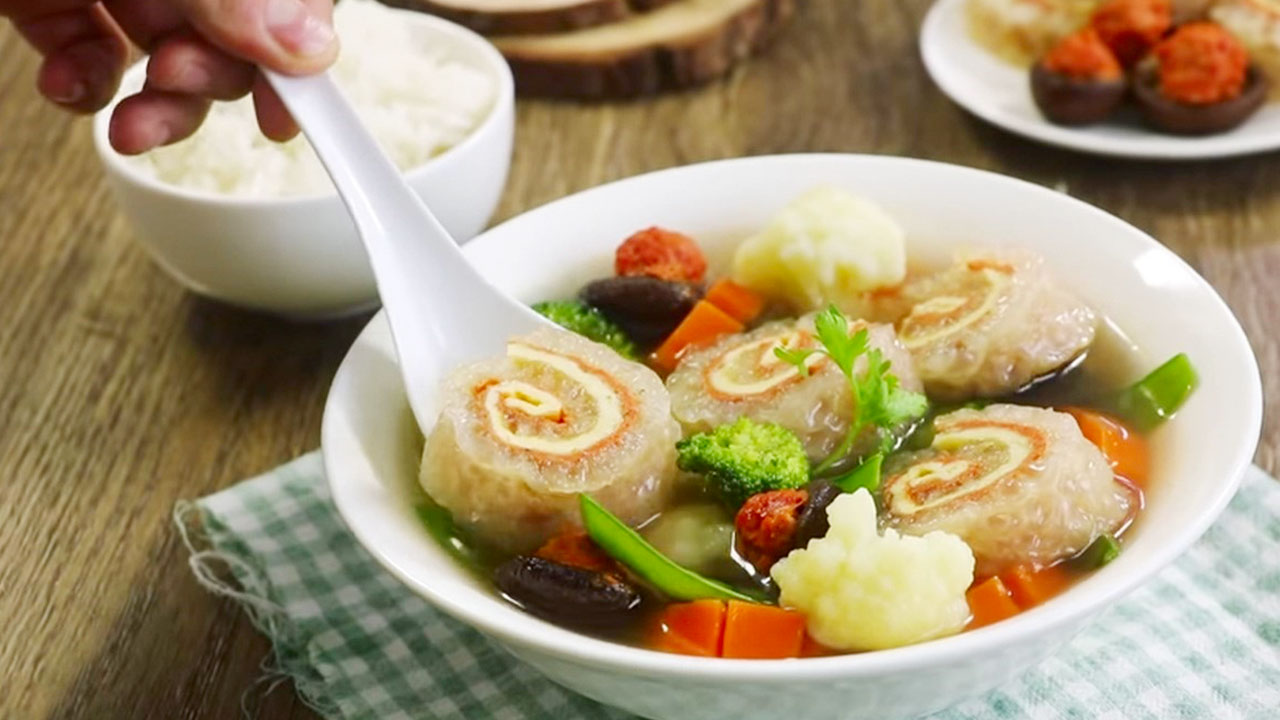
Canh bóng is a hearty soup that is often served during Tết. The soup is made with a variety of vegetables, such as carrots, daikon, and cabbage. is also made with pig skin, which gives the soup a rich flavor. Canh bóng is a symbol of good luck and prosperity, and it is often served at family gatherings during Tết.
This soup gets its signature gelatinous texture from the pig skin, which turns soft and velvety when simmered. The skin is often tossed with crunchy peanuts and fried shallots to provide texture. Canh bóng is lightly seasoned, allowing the natural sweetness of the vegetables and pork skin to shine.
Common additions include julienned carrots, chunks of daikon radish, slices of banana blossom stems, and cabbage. Bean sprouts and cilantro are also popular garnishes. The canh has a rich and velvety mouthfeel but retains a clean, light flavor profile. It is considered an essential part of the Tet feast.
Thịt kho trứng (Braised pork with egg)

Thịt kho trứng is a popular Vietnamese dish that is often served during Tết. The dish is made with pork belly, eggs, and a braising sauce made from fish sauce, soy sauce, and sugar. Thịt kho trứng is a symbol of good luck and prosperity, and it is often served with steamed rice.
Pork belly and hard-boiled eggs are melt-in-your-mouth tender after being braised for hours in a clay pot. Fish sauce, soy sauce, and brown sugar create a savory caramel-like sauce that coats each bite. Slices of pork belly are layered with whole boiled eggs in the clay pot and cooked over low heat.
As it simmers away, the fatty pork belly bastes the eggs while absorbing the sweet and salty flavors of the sauce. The resulting dish is rich, sweet, salty, and unctuous. The eggs soak up the sauce and turn dark amber in color. Thịt kho trứng is served warm over rice or rice noodles, often garnished with green onions.
Dưa hành (Pickled scallion)
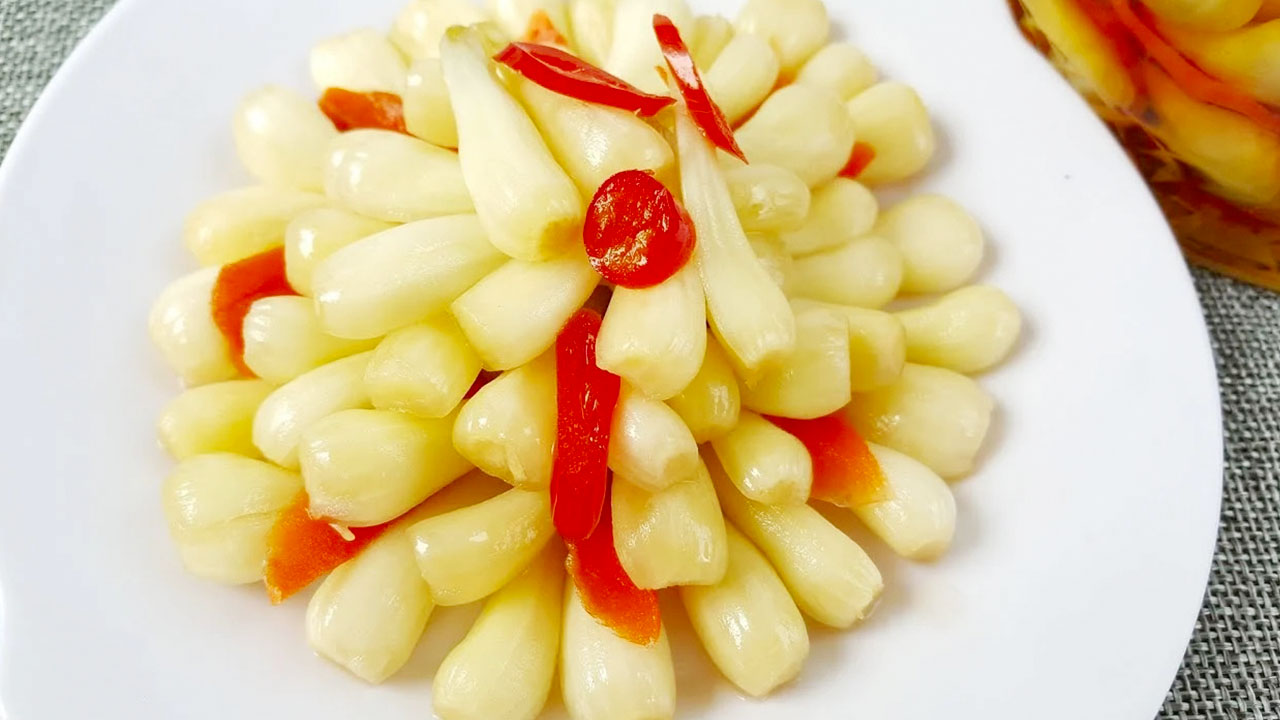
Dưa hành is a traditional Vietnamese dish that is often served during Tết. The dish is made with scallions that have been pickled in vinegar, sugar, and salt. Dưa hành is a symbol of good luck and prosperity, and it is often served with bánh chưng and boiled chicken.
Pickled scallions are an integral side dish in every Tet meal. They provide a crunchy, tangy contrast to the other dishes. To make dưa hành, scallions are julienned and mixed with vinegar, sugar, and salt. They are compressed in jars to pickle for a few days, allowing the flavors to meld.
When ready, the pickled scallions are mounded on serving plates garnished with shredded carrots, radishes, cilantro, and chopped chilies. Their bright tang and crunch liven up the plate. Dưa hành balance out the rich meats and sticky rice cakes. A sprinkle of dưa hành adds a welcome burst of flavor to any bite.
Mứt (Candied fruits)
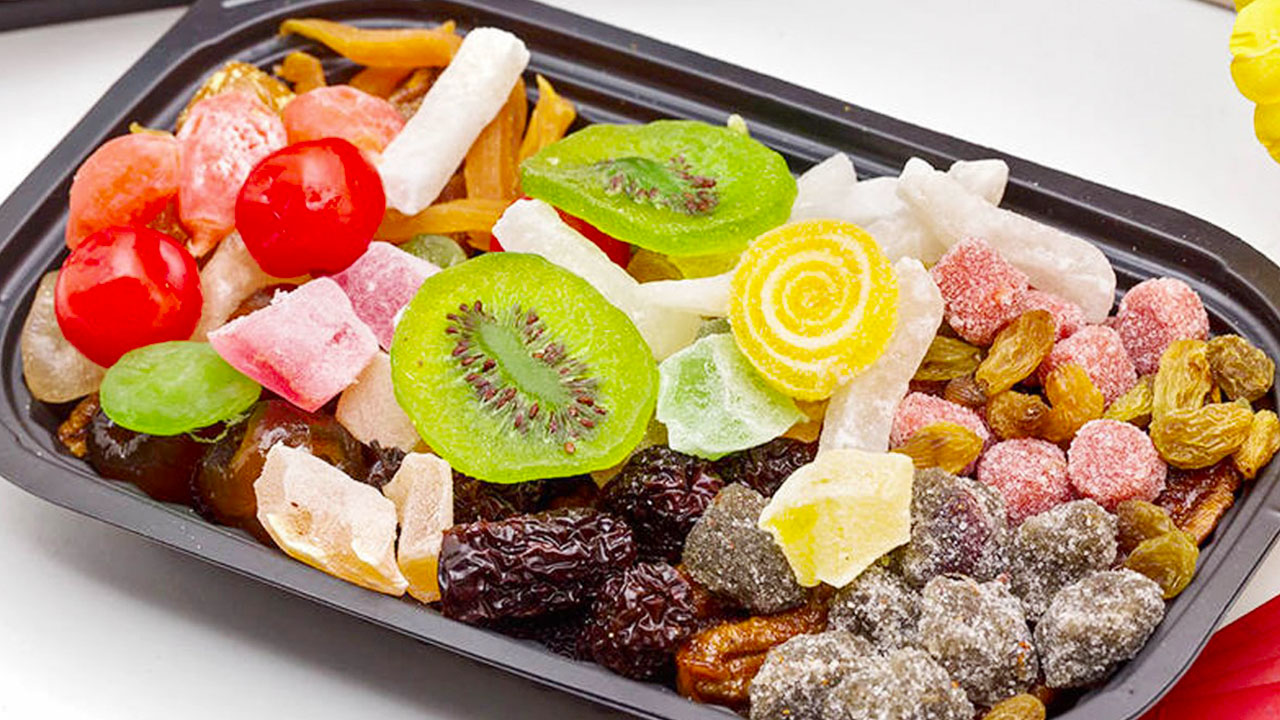
Mứt refers to various candied fruits and jams that are popular treats during Tet. Fruits like coconut, ginger, tamarind, plum, and dried apricot are simmered in syrup until tender and translucent. The candied fruits symbolize the sweetness of life and are served to wish for prosperity in the new year.
Candied fruits are enjoyed as snacks or desserts after the Tet feast. They are also used to decorate banh chung cakes and the family ancestral altar. Common varieties include mứt gừng (candied ginger), mứt bí đao (candied squash), and mứt hạt dưa (candied watermelon seeds).
The candying process concentrates the fruits’ natural flavors, making them intensely sweet and chewy. But each fruit retains its signature flavor like the citrusy tang of candied kumquats. Candied fruits are sticky, syrupy, and indulgent – a perfect sweet ending to the Tet meal.
Things to do in the Vietnamese Lunar New Year
Clean the house

Tet preparations involve thoroughly cleaning the house, which represents sweeping away any ill fortune and making way for incoming luck. Every nook and cranny is scrubbed and freshened up before Tet arrives.
On Tet Eve, brooms are put away to avoid sweeping away any good luck that has entered the home. Some leave a bit of unfinished work to have reasons to look forward to the new year. Cleaning the house cleanses the spirit and welcomes Tet festivities.
Participate in making Tet banh chung
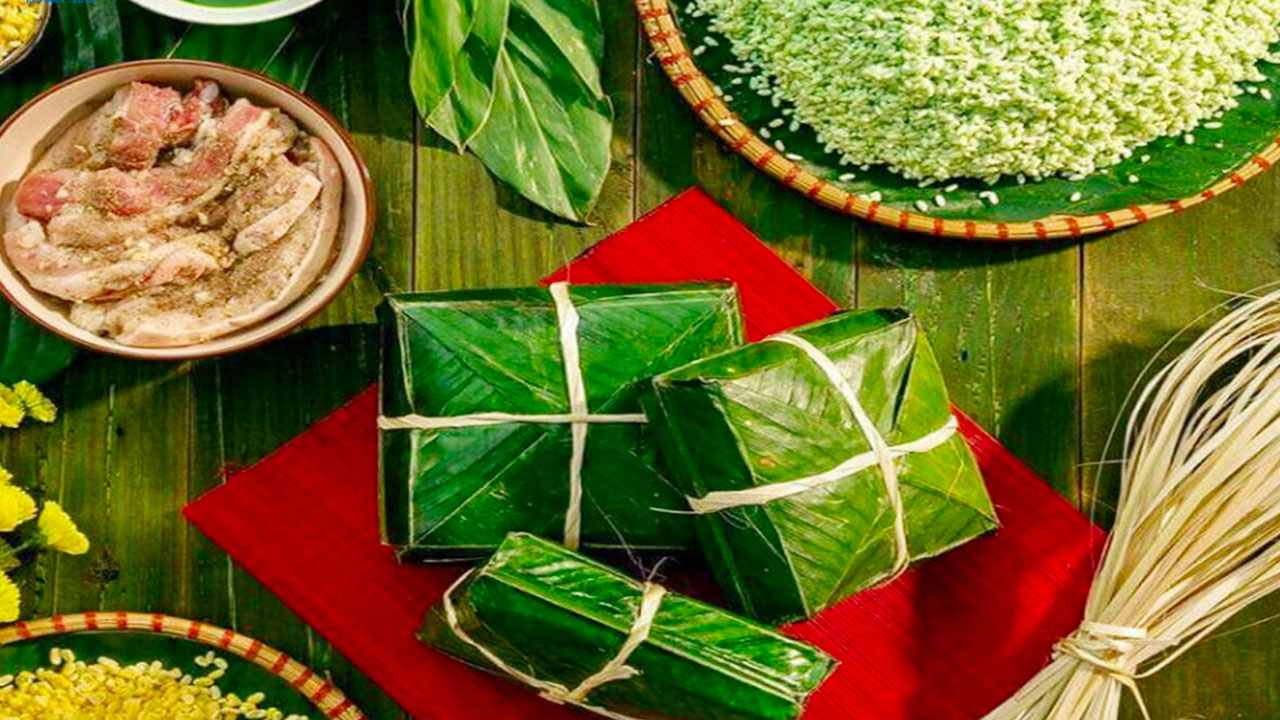
Making Tet banh chung is a beloved tradition for Vietnamese families. The process of assembling the sticky rice cakes is time-consuming but rewarding. Families often gather a few days before Tet to make them together.
Everyone has a role in the process. Some wash rice , others prepare the meats and beans for the filling. Leaves must be cleaned and readied to wrap each cake. Assembly requires care to wrap the filling properly in the “dong” leaves and tie it securely closed. Then the huge trays of banh chung are moved into giant steamers.
The steamers must be watched carefully, maintaining just the right level of water and steam. After hours of steaming, the “dong” leaf parcels are removed and unwrapped to reveal the finished cakes. Making banh chung is labor-intensive but so satisfying. The whole family works hard together and takes pride in their homemade Tet cakes.
Make banh tet
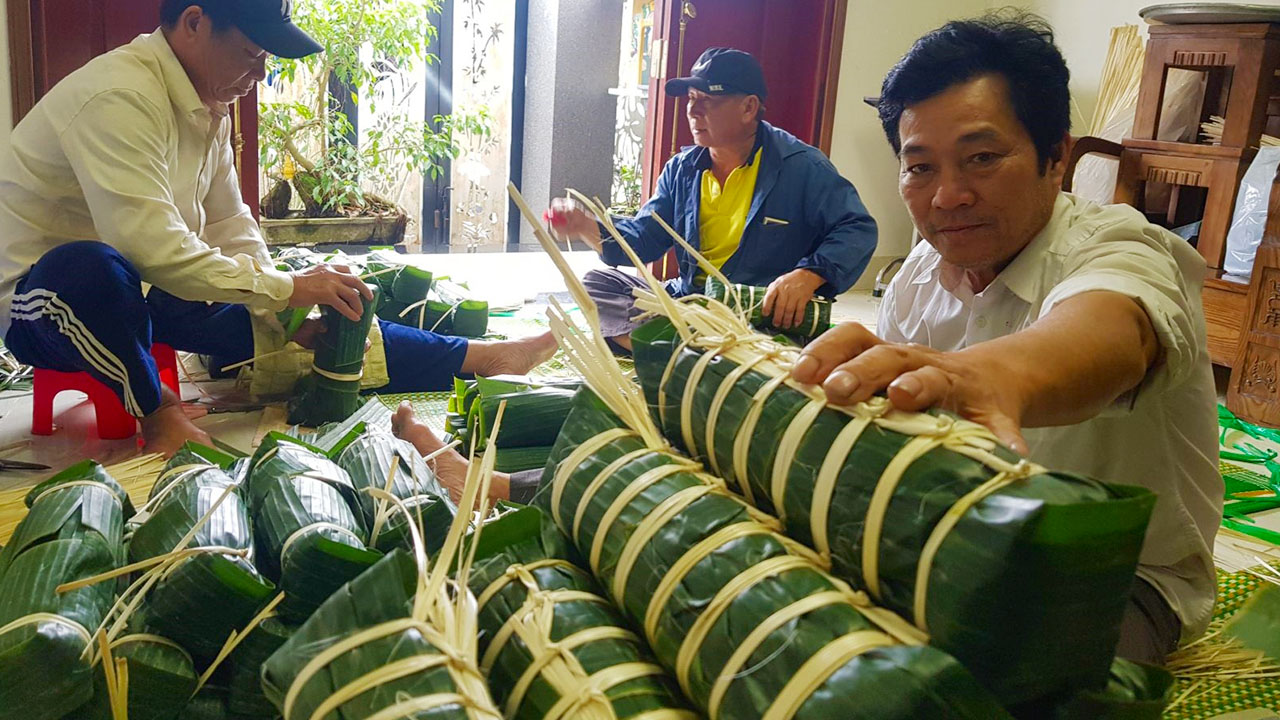
While banh chung is more famous, banh tet is another essential rice cake. Banh tet is made of glutinous rice with a mung bean and coconut filling. The rice dough is rolled into cylinders around the sweet filling and wrapped in banana leaves, then steamed until cooked through.
Making banh tet is a Tet tradition in central and southern Vietnam. The sweet and dense banh tet contrasts nicely with the hearty savory banh chung. The coconut milk gives them a uniquely creamy, aromatic flavor. Many families make both types of rice cakes together and enjoy them throughout the holiday.
Explore the Tet market
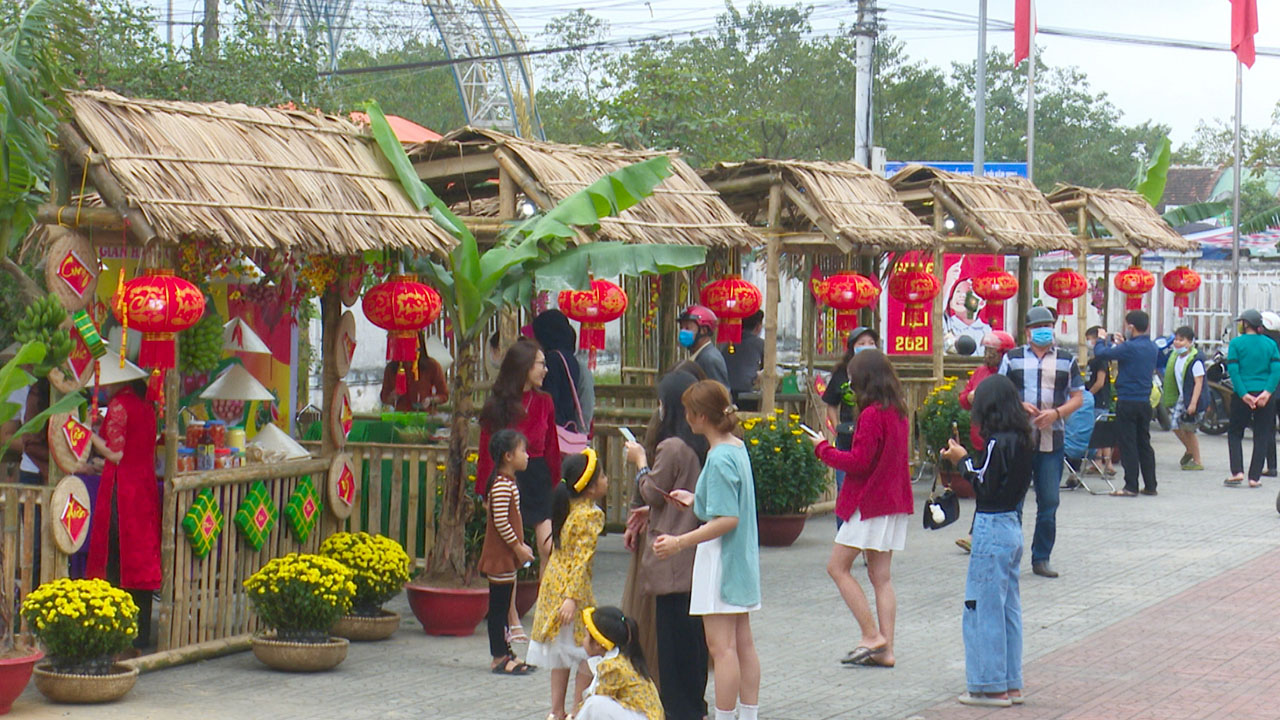
In the days leading up to Tet, temporary street markets pop up in cities and towns across Vietnam overflowing with fruits, flowers, festive decorations and traditional Tet foods. These bustling Tết markets are filled with the sights, sounds and smells of the holiday.
Vendors call out their wares of bright yellow mai flowers, incense sticks, firecrackers, candied fruits, nuts, and colorful confections. Shoppers squeeze through crowded aisles while motorbikes crawl through. Bins brim with fresh produce to make mứt and to decorate family altars. Live fish and poultry await their fate for the feast.
For an authentic cultural experience, Tet markets are an overload of colors, fragrances, and excitement. They capture the happy chaos as everyone prepares for Vietnam’s biggest holiday.
Visit flower markets
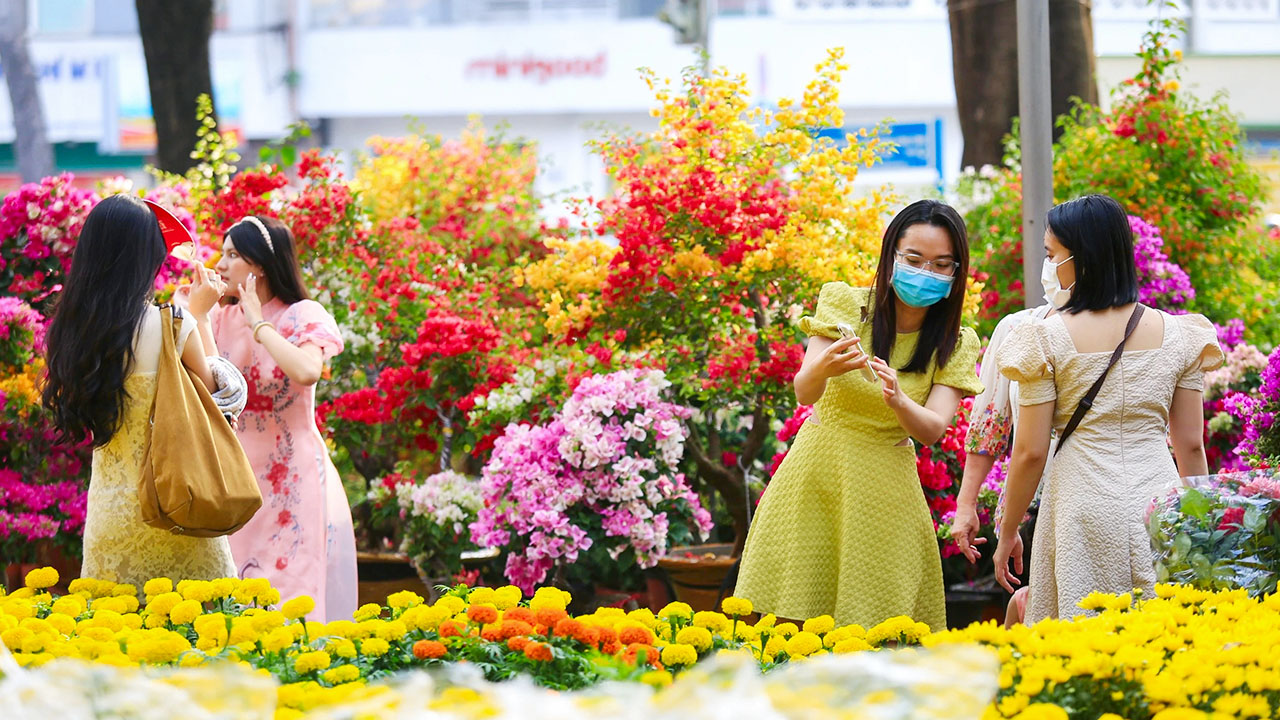
Flower markets are bursting with blooms and activity before Tet as people buy flowers and plants to decorate their homes. Bright yellow apricot blossoms, chrysanthemums, marigolds, and peach flowers are highly popular. Flower stalls spill out into the streets, creating vibrant rivers of color. The fragrances of fresh flowers and citrus trees fill the air.
Flower markets are also where people buy elaborate flower arrangements, potted kumquat trees, and other plants to adorn family altars and wish for a prosperous new year. Browsing the lively flower markets and taking in the sights and scents is a treat for the senses.
Go to temples and pagodas
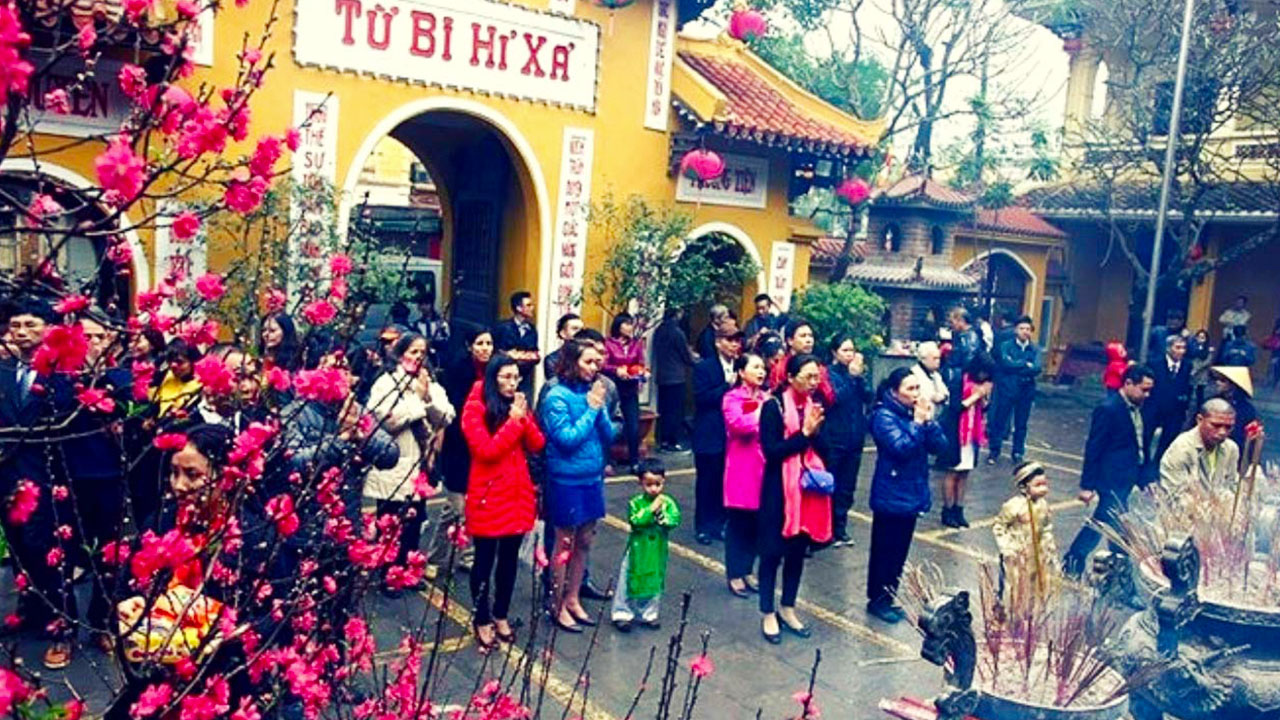
Visiting temples and pagodas is a major Tet tradition for many Vietnamese families. Huge crowds flock to famous Buddhist temples like the Ngoc Son temple, Perfume Pagoda, Tran Quoc Pagoda, and Tay Phuong Pagoda to pray for luck and happiness.
Incensesmoke wafts through the air as people light incense sticks and place them in burners. The ringing of temple bells mixes with chants of prayers. Many leave offerings of fresh flowers and fruits at temple altars. Lions and dragon dances bring further spiritual blessings.
After praying, people buy amulets, charms and religious trinkets from temple vendors to bring home. Tet temple visits let people reflect on the past year and pray for the new one. The bustling temples deeply immerse visitors in Vietnamese beliefs.
Watch the fireworks

Fireworks light up the skies across Vietnam to celebrate Tet and the Lunar New Year. Major cities and tourist destinations hold impressive fireworks displays that draw crowds of spectators.
In Hanoi, brilliant fireworks explode over scenic Hoan Kiem Lake. Down south in Ho Chi Minh City, colorful rockets fire off over the Saigon River. Other cities like Da Nang and Phu Quoc also have spectacular shows.
Watching fireworks on Tet Eve is believed to bring good luck and fortune for the new year. The crackling explosions are also thought to ward off evil spirits. For locals and tourists alike, the dazzling fireworks and festive atmosphere make for an unforgettable Tet experience.
Visit local people’s homes
Visiting family and friends during Tet is a core tradition. In the days before and after Tet, Vietnamese travel to the homes of loved ones bearing gifts and Tet greetings. Guests are welcomed with open arms.
The hosts prepare an elaborate spread of holiday foods to enjoy together. Visiting local homes offers a warm glimpse into Vietnamese family life. It is a chance to watch families make banh chung, decorate ancestral altars, exchange lucky money in red envelopes, and feast on traditional Tet delicacies.
While visiting temples and markets is exciting, home visits deeply immerse you in Vietnamese culture. The intimate setting lets you forge connections and gain insight into cherished Tet rituals.
Give out lucky money

It is tradition for older relatives to gift children lucky money in new, crisp bills during Tet family visits. Lucky money is given in special red envelopes called mung bao or li xi. Receiving these red envelopes from elders symbolizes blessings and well wishes for the new year.
The amount is usually an even, auspicious number. Common amounts are 20.000 – 500.000 dong. For foreigners, one red envelope with 200,000 VND is fine. Lucky money is highly significant, so accept your envelope with two hands and give thanks.
Participate in spring festivals
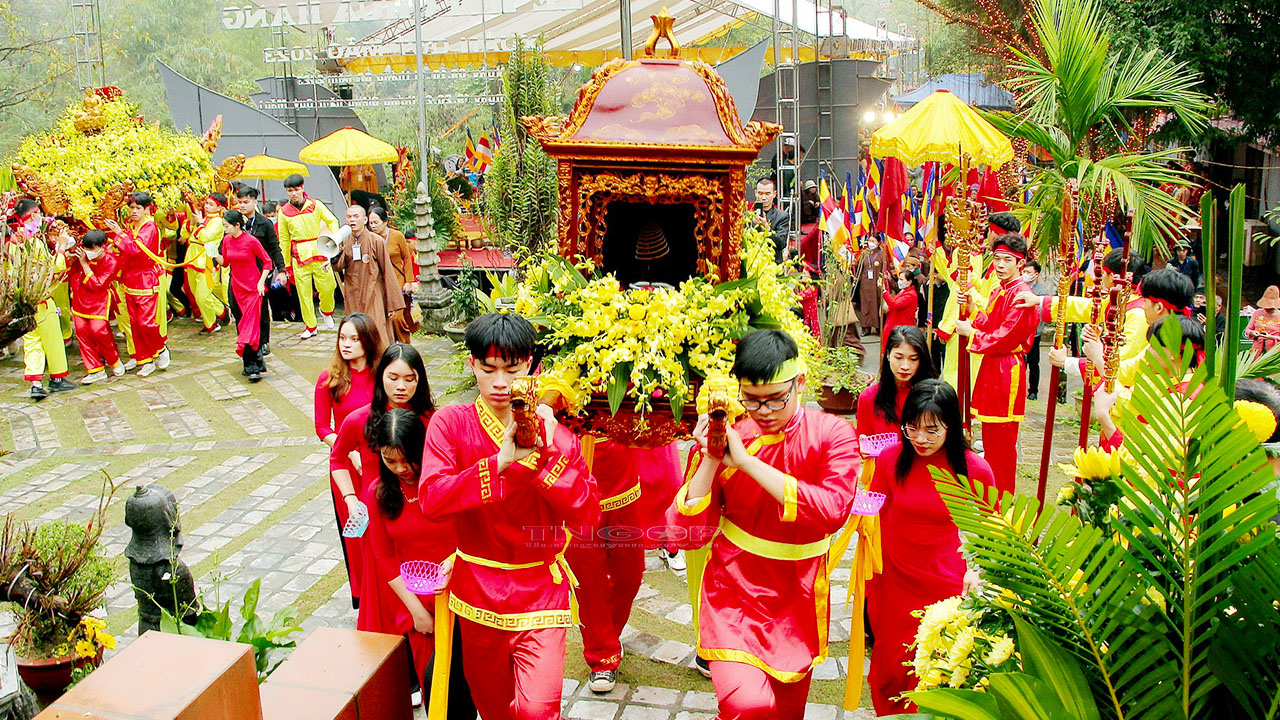
Many lively festivals take place around Vietnam during Tet. They feature fun activities, performances, games, and food for communities to celebrate the new year together.
In northern villages, locals celebrate the triumph over evil spirits in the festive Đốt chuồn ritual. Effigies and costumes representing bad spirits go up in flames. Other villages hold bright parades with musicians, dancers, and floats.
The vibrant Da Lat flower festival showcases artistic flower sculptures and arrangements. Beach towns like Nha Trang hold rowdy swim races and sporting events on the sand. Trying your hand at fun local games or watching street performers is a joyous way to celebrate Tet.
Explore spring neighborhoods

Wandering through festive neighborhoods in Vietnam’s major cities offers many Tet sights and photo opportunities. Homes, shops, and streets are decorated with special Tet symbols of good fortune.
In Hanoi’s Old Quarter, traditional tube houses hang marigold garlands and have kumquat trees out front. Sai Gon’s Chinatown erects golden blooming apricot trees. All over, red and gold banners, lanterns, and parallel poems adorn front doors.
Exploring bustling spring neighborhoods lets you see Tet preparation firsthand. Vendors sell flowering branches,Tet decor, festive snacks, and brightly colored clothes. Soaking up the festive sights sets the mood for Vietnam’s biggest holiday.
Enjoy street food on Tet holiday
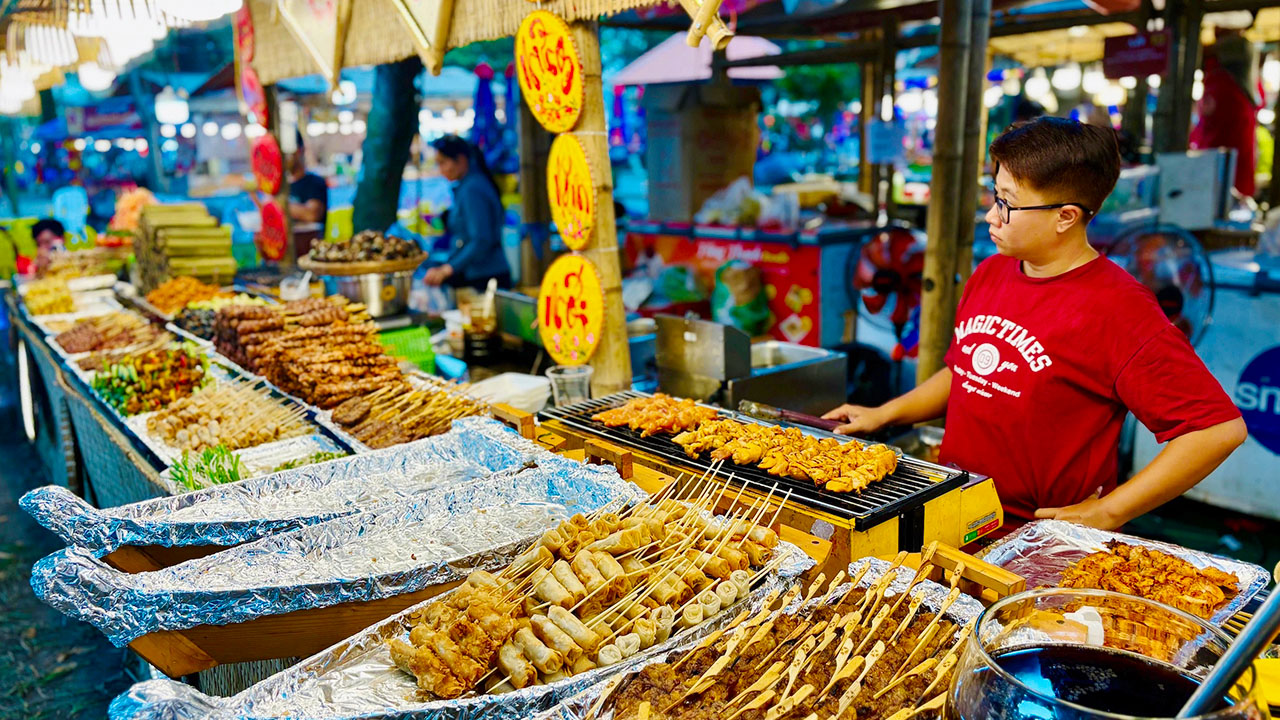
Tet is one of the best times to sample festive Hanoi street food. Mobile food carts, street vendors, and markets cook up special holiday treats. Sweet snacks symbolizing luck and prosperity are very popular.
Visitors can try bánh tét, sticky rice with pork and beans steamed in banana leaves. Vendors serve up crunchy candied fruits rolled in sesame seeds. There are fried sesame balls stuffed with mung beans and colorful jellies. Other desserts include chewy ném công and che bap grapefruit-flavored taffy.
Salty crispy snacks are also easy to find. Pick up deep-fried shrimp crackers or squares of crunchy grilled rice cake. Trying festive Vietnamese street foods adds to the celebratory atmosphere of Tet.
Conclusion
The Lunar New Year in Vietnam, Tết Nguyên Đán, is a time-honored celebration filled with diverse customs and rituals. This auspicious occasion embodies the rich cultural heritage of Vietnam and offers an enriching experience for locals and visitors alike. Embracing the spirit of togetherness, gratitude, and optimism, Tết truly captures the essence of Vietnamese tradition and values.
The Vietnamese Lunar New Year is filled with meaningful traditions, delicious foods, and festive activities. Tet celebrations provide many opportunities to experience Vietnamese culture and hospitality at its best. The holiday invites visitors to enjoy time with loved ones, reflect on the past year, and look ahead to brighter times in the new one. From preparing banh chung to visiting temples or watching fireworks, Tet traditions epitomize Vietnamese beliefs, values, and way of life. Joining in the Tet festivities offers a profoundly immersive cultural encounter.


